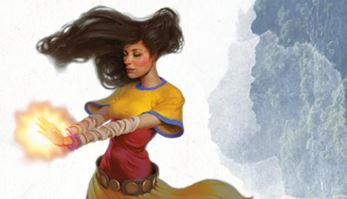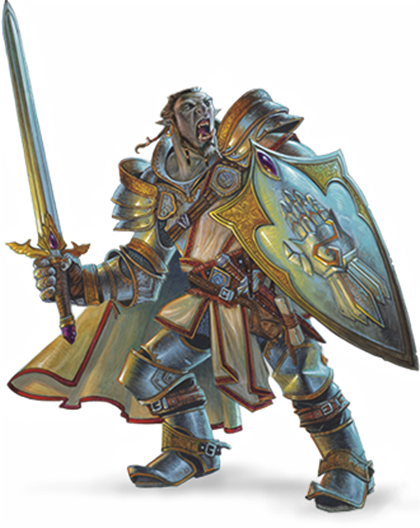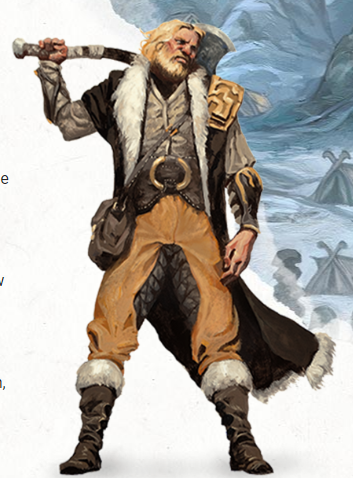The Art of Roleplaying a Monk in D&D 5e – In Pursuit of Inner Harmony
Contents
Welcome to our blog dedicated to the fascinating world of Monks in Dungeons & Dragons 5th Edition! Within these digital pages, we embark on a journey to explore the intricate path of the monk, a class deeply rooted in discipline, agility, and spiritual enlightenment.
Join us as we delve into the secrets of the monastic order, unveiling the ancient techniques, philosophies, and traditions that shape the monk’s way of life. From the tranquil monasteries nestled atop misty mountains to the bustling streets of crowded cities, we traverse the vast landscapes of imagination, seeking to understand the essence of what it means to be a monk.
Discover the diverse monastic traditions available to aspiring practitioners, each offering a unique set of abilities and playstyles. We unravel the enigmatic mysteries of ki energy, enabling monks to channel their inner power and unleash devastating strikes upon their foes. With a keen focus on martial prowess and unmatched agility, the monk excels at both unarmed combat and wielding specialized monk weapons.
Alongside the exploration of character options, we delve into the art of roleplaying a monk, providing insights on how to bring this captivating class to life. From the stoic and disciplined demeanor to the profound spiritual journey, we discuss the nuances of portraying a monk’s values, ideals, and motivations.
Whether you seek guidance on character creation, subclass selection, optimization tips, or simply wish to deepen your understanding of the monk class, our blog is a wellspring of knowledge, designed to inspire and empower both novice and seasoned players alike.
So, ready your mind, body, and spirit as we embark on a quest to unlock the secrets of the monk in D&D 5e. Let the path of tranquility, strength, and enlightenment unfold before your eyes. Welcome to a world where the fist becomes a weapon of harmony, and the pursuit of perfection leads to a profound connection with the divine. Welcome to our Monk 5e blog!
Monk 5e in the game of D&D is one of the most iconic martial artists and playable characters who love to punch things that usually come around in its way. Monk 5e is a human covered in tattoos who work as a great defender and striker in the D&D 5th edition game. They typically are being used as fighters only who love to blast fire roars from its mouth by engulfing their foes. Monk D&D 5e can live in the union while magically harnessing the energy following in their bodies.
They are one of the most disciplined creatures whose striking display of combat powers was subtler focusing on defensive ability and speed.
Check also: All D&D 5e Classes
A Deep Dive into Monk Abilities in D&D 5e
Monk 5e is a non-armor character that generally uses simple weapons and short words to fight against their enemies. They love to play on a particular type of artisan’s tools or musical instruments.
Hit Points
- Hit Dice: 1d8 per monk level
- Hit Points at 1st Level: 8 + your Constitution modifier
- Hit Points at Higher Levels: 1d8 (or 5) + your Constitution modifier per monk level after 1st
Proficiencies
- Armor: None
- Weapons: Simple weapons, shortswords
- Tools: Choose one type of artisan’s tool or one musical instrument
- Saving Throws: Strength, Dexterity
- Skills: Choose two from Acrobatics, Athletics, History, Insight, Religion, and Stealth
Equipment
- (a) a shortsword or (b) any simple weapon
- (a) a dungeoneer’s pack or (b) an explorer’s pack
- 10 darts

Strength, Dexterity is some of its most exceptional saving throws. If we talk about its skills Acrobatics, Athletics history, Insight, Religion, and Stealth are some of its mind-blowing skills from which one can easily choose two while creating their Monk for the game.
| Level | Proficiency Bonus | Martial Arts | Ki Points | Unarmored Movement | Features |
|---|---|---|---|---|---|
| 1st | +2 | 1d4 | — | — | Unarmored Defense, Martial Arts |
| 2nd | +2 | 1d4 | 2 | +10 ft. | Ki, Unarmored Movement |
| 3rd | +2 | 1d4 | 3 | +10 ft. | Monastic Tradition, Deflect Missiles |
| 4th | +2 | 1d4 | 4 | +10 ft. | Ability Score Improvement, Slow Fall |
| 5th | +3 | 1d6 | 5 | +10 ft. | Extra Attack, Stunning Strike |
| 6th | +3 | 1d6 | 6 | +15 ft. | Ki-Empowered Strikes, Monastic Tradition feature |
| 7th | +3 | 1d6 | 7 | +15 ft. | Evasion, Stillness of Mind |
| 8th | +3 | 1d6 | 8 | +15 ft. | Ability Score Improvement |
| 9th | +4 | 1d6 | 9 | +15 ft. | Unarmored Movement improvement |
| 10th | +4 | 1d6 | 10 | +20 ft. | Purity of Body |
| 11th | +4 | 1d8 | 11 | +20 ft. | Monastic Tradition feature |
| 12th | +4 | 1d8 | 12 | +20 ft. | Ability Score Improvement |
| 13th | +5 | 1d8 | 13 | +20 ft. | Tongue of the Sun and Moon |
| 14th | +5 | 1d8 | 14 | +25 ft. | Diamond Soul |
| 15th | +5 | 1d8 | 15 | +25 ft. | Timeless Body |
| 16th | +5 | 1d8 | 16 | +25 ft. | Ability Score Improvement |
| 17th | +6 | 1d10 | 17 | +25 ft. | Monastic Tradition feature |
| 18th | +6 | 1d10 | 18 | +30 ft. | Empty Body |
| 19th | +6 | 1d10 | 19 | +30 ft. | Ability Score Improvement |
| 20th | +6 | 1d10 | 20 | +30 ft. | Perfect Self |
What weapons usually does Monk 5e uses?
Monk D&D 5e are generally unarmed characters who prefer to fight against their enemies using their martial arts skills. You have to practice hard to master those martial arts skills over unarmed strikes and monk weapons such as shortswords and simple melee weapons.
Merciful Mask
| d6 | Mask Appearance |
|---|---|
| 1 | Raven |
| 2 | Blank and white |
| 3 | Crying visage |
| 4 | Laughing visage |
| 5 | Skull |
| 6 | Butterfly |
What is Ki in the game?
Ki is mystic energy that is acquired by the Monk 5e in its 2nd level. The power of the monk is expressed in terms of Ki it has. More will be the number of Ki more will be the power and vice versa. The amount of Ki present in a monk indicates the level of a monk.
Once you get short of Ki you need to take short or extended rest to draw or get back all of your expended Ki back into yourself. One must need to get rest at least for thirty minutes to acquire one Ki in the game.
The Ki Saving Throw DC is usually calculated as 8 + your proficiency bonus and +your wisdom modifier. You are given three Ki at the beginning of the game that you can use one immediately for taking the Attack action of a flurry of blows, one for making the Dodge action for patient defense, and one for taking the Disengage or Dash action as a step of wind as a bonus action.
Way of the Astral Self Features
| Monk Level | Feature |
|---|---|
| 3rd | Arms of the Astral Self |
| 6th | Visage of the Astral Self |
| 11th | Awakening of the Astral Self |
| 17th | Complete Astral Self |
Attributes
- Hit Die: d8
- Starting Gold: 5d4
- Subclass Name: Monastic Tradition
- Suggested Abilities: Dexterity, Wisdom
Creating a Monk
Creating a Monk character can be an exciting and rewarding endeavor. Monks are typically depicted as disciplined individuals who have dedicated their lives to the pursuit of spiritual enlightenment and physical mastery. Here’s a guide to help you create a compelling Monk character for your story or game:
- Choose the Background: Consider the background of your Monk character. Were they raised in a monastery or temple? Did they come from a specific culture or lineage with unique traditions? Understanding their background will help shape their personality, beliefs, and motivations.
- Determine the Monastic Tradition: Monks follow different paths or monastic traditions, each emphasizing specific skills and philosophies. Some popular examples include:
- Way of the Open Hand: Focused on unarmed combat and achieving harmony with body and mind.
- Way of the Shadow: Specializes in stealth, infiltration, and manipulation of darkness.
- Way of the Four Elements: Harnesses elemental powers to enhance their martial arts.
- Way of the Sun Soul: Combines radiant energy with martial arts, manifesting as bursts of light.
Choose a monastic tradition that aligns with your character’s goals and interests.
- Define Personality Traits: Consider your Monk character’s personality. Are they stoic and disciplined, or do they have a more carefree and unconventional approach to life? Do they prioritize peace and tranquility or seek to right wrongs and protect the weak? Define their key traits, values, and quirks.
- Determine Physical Attributes: Monks are known for their exceptional physical prowess and agility. Consider your character’s body type, physical strengths, and any distinguishing features. Are they exceptionally fast, strong, or flexible? These attributes can play a role in both combat and non-combat situations.
- Establish Goals and Motivations: What drives your Monk character? Are they seeking personal enlightenment, pursuing justice, or on a quest for redemption? Establish clear goals and motivations that will guide their actions and decisions throughout your story or game.
- Select Skills and Abilities: Monks excel in hand-to-hand combat, but they also possess other unique abilities. Consider skills such as martial arts techniques, unarmed strikes, evasion, and the ability to harness their ki energy for extraordinary feats. Select abilities that align with your character’s chosen monastic tradition and personal style.
- Develop Backstory: Craft a backstory that explains how your Monk character arrived at their current state. Did they face trials and challenges during their training? Are there significant events or people that shaped their journey? A well-developed backstory adds depth and richness to your character.
- Choose Equipment and Possessions: Monks typically favor light and simple equipment. Traditional monk robes, hand wraps, and a quarterstaff or a set of martial arts weapons could be suitable choices. Consider any personal possessions or mementos that hold special significance for your character.
Remember, while this guide provides a foundation, it’s essential to infuse your Monk character with unique traits and personal touches. By doing so, you’ll create a memorable and engaging character that can captivate your audience or fellow players.
What are the main features of Monk 5e?
Monk D&D 5e is upgraded with various advanced unusual features to acquire some extra points in the game. You have to build up your preferred monk to do the best in the game. Some of the most amazing features of Monk 5e are:
- Unarmored: As we have mentioned to you earlier that Monk 5e includes no armor it will use its martial arts skills to get a lead in the game. The speed increases upon entering the 2nd level of the game while you will be wearing no armor. You can quickly move through the game unarmored up to 9th level, but after that, you need to make use of a reliable, upright surface or risk falling to move ahead in the game.
- Monastic: Monk 5e usually tends to follow a particular monastic tradition up to level 3. but on entering the next levels such as the 3rd, 6th, 11th, and 17th levels you can opt for the other one depending on your requirement and preferences.
- Deflect Missiles: Monk 5e remained unarmored till level 3rd, but once you get it, you can make use of any ranged weapon attack to deflect or catch the missile.
- Ability score improvement: Monk 5e is usually free to raise one ability score into your account by 2 and two ability scores by one each on entering the 4th, 8th, 12th, 16th, and 19th levels of the game. Moreover, a monk can’t raise the scores by more than 20 using this ability score improvement function.
- Slow Fall: Users are free to access the associated reaction at level 4 to control the falling damage five times much faster which means that the energy level of your monk will fall very slowly now.
- Extra Attack: The action rate also gets doubles on the turn at level 5.
- Stunning Strike: – Users are free to interrupt the flow of Ki from level 5.
- Ki Strikes: Usage of unarmed strikes at the 6th level magically overcomes the resistance and immunity usually coming from the nonmagical attacks.
- Evasion: The power of avoidance developed at level 7 enables you to dodge out of the way of certain attacks.
- The stillness of mind: Your monk is free to use the silence of mind feature at level 7 to remain calm in various situations, whether if someone tries to frighten them or it is a moment of extreme happiness.
- The purity of Body: Monk 5e usually attains the level of purity of the body at the 10th level. His/her body achieves extreme immunity to fight against diseases and poisons, and hence the level of energy ultimately rises.
- The Tongue of Sun and Moon: Monk D&D 5e usually attains the power of mind readiness when he/she reached level 13. He just by touching the Ki of other minds becomes able to understand all the languages usually spoken around him/her.
- Diamond Soul: Monk 5e attains mastery in all saving throws at level 14.
- Timeless Body: Monk 5e attains an eternal body on reaching level 15, where no frailty of old age can affect his body. Monk can further not need to take any food or water and can die of old age but shows no features externally.
- Empty Body: Monk 5e attains the magical power of getting invisible at least for 1 minute just by spending 4 Ki points on it at level 18. The body of Monk 5e becomes fully resistant to all the damages caused by the enemies except force damage that they still can’t bear.
- Perfect Self: On reaching the level of D&D 5e, if your monk 5e is left with no Ki points and has roll initiative to go along with their account will automatically be credited with 4 Ki points to move further with the process.
FAQs
Q: What Do You Think Of The World Outside the Monastery?
A: If you have been raised with the aid of monks, this region would be strange, nearly alien in the way that humans do not deal with every difference with admiration and honor.
Q: What Do You See In Your Fellow Adventurers
A: For a monk to journey with adventurers is a tremendous honor. It suggests that they are precious to you. What do you see in them? What units separate them apart? You have to be capable to reply that for every one of the characters.
Q: Has 5e constant the stability issues of the monk at all?
A: Yes. Monks are nonetheless amongst the weakest classes, however, the distinction between the strongest and the weakest is tons smaller than in 3.5.
Q: How can we expand my Monk’s unarmed damage?
A: Monks can (and should) use weapons. On decreasing tiers your unarmed assaults deal 1d4 damage, so 1d8 from a Quarterstaff in two hands is a large improvement.
Q: Does Pathfinder notably restoration recognize troubles with the Monk class?
A: Not solely does it not, it doesn’t even strive The Pathfinder Monk no longer sees any great improvements. Regular Monk, now not so much, however Monk Unchained does pretty properly indeed.
Q: What regulations or pointers are there about when to permit a birthday celebration to collect plate mail?
A: Somewhere between degrees 5 and eleven Six stages is a lot of variances, so let’s see what we can discern. The sole legitimate issue that would restrict the acquisition of plate armor would be its exorbitant cost.


